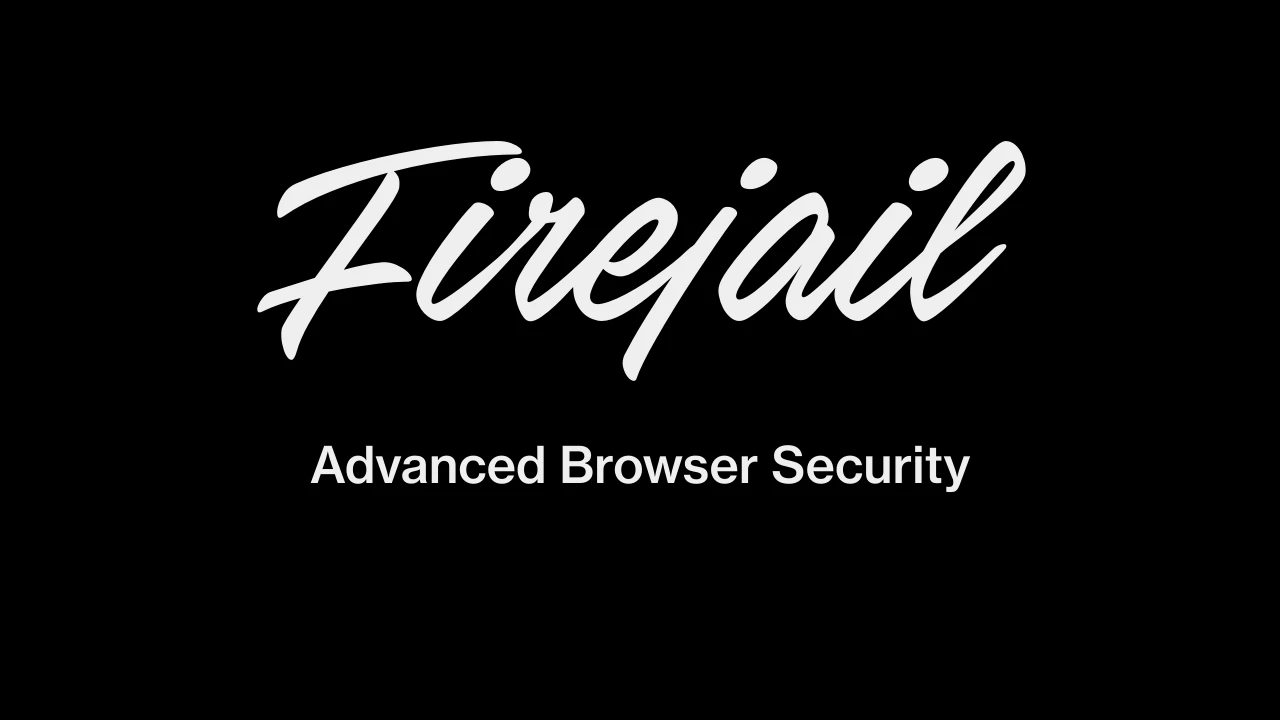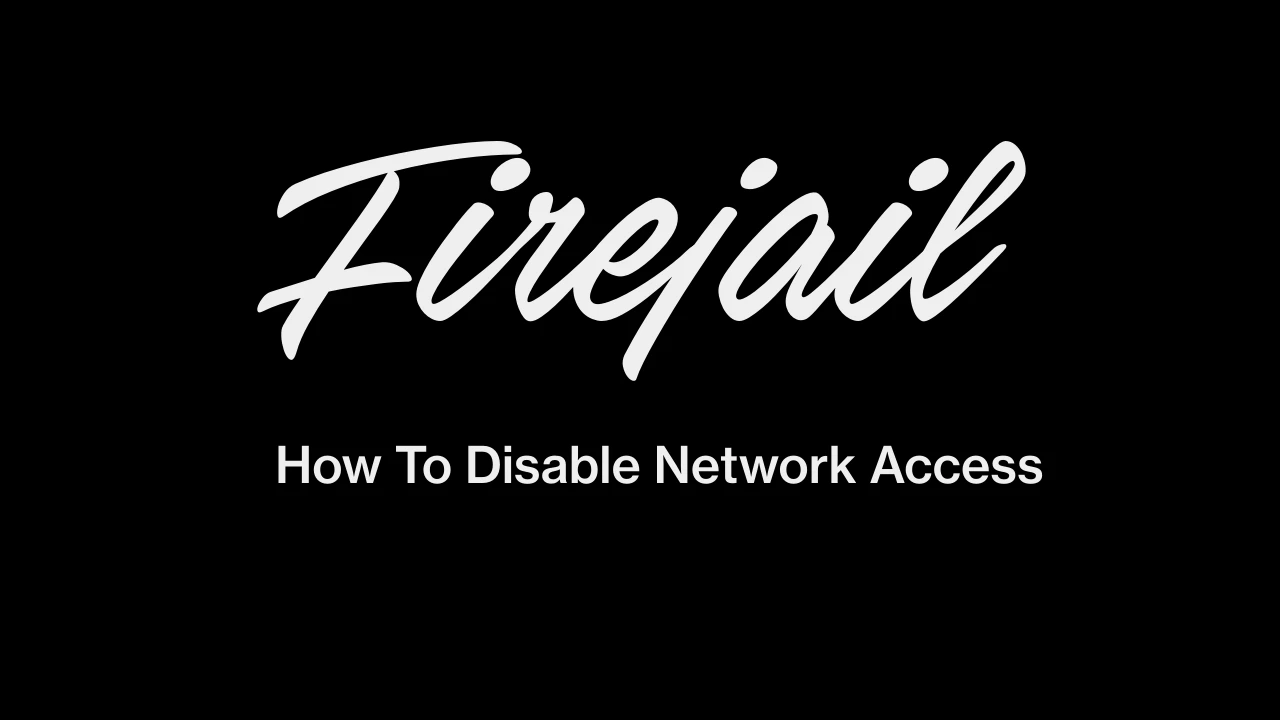Firejail is a SUID sandbox program that reduces the risk of security breaches by restricting the running environment of untrusted applications using Linux namespaces, seccomp-bpf and Linux capabilities. It allows a process and all its descendants to have their own private view of the globally shared kernel resources, such as the network stack, process table, mount table. Firejail can work in a SELinux or AppArmor environment, and it is integrated with Linux Control Groups.
Written in C with virtually no dependencies, the software runs on any Linux computer with a 3.x kernel version or newer. It can sandbox any type of processes: servers, graphical applications, and even user login sessions. The software includes sandbox profiles for a number of more common Linux programs, such as Mozilla Firefox, Chromium, VLC, Transmission etc.
The sandbox is lightweight, the overhead is low. There are no complicated configuration files to edit, no socket connections open, no daemons running in the background. All security features are implemented directly in Linux kernel and available on any Linux computer.
 Advanced Browser Security |
 How To Disable Network Access |
 Deep Dive |
Project webpage: https://firejail.wordpress.com/
IRC: https://web.libera.chat/#firejail
Download and Installation: https://firejail.wordpress.com/download-2/
Features: https://firejail.wordpress.com/features-3/
Documentation: https://firejail.wordpress.com/documentation-2/
FAQ: https://github.com/netblue30/firejail/wiki/Frequently-Asked-Questions
Wiki: https://github.com/netblue30/firejail/wiki
GitLab-CI status: https://gitlab.com/Firejail/firejail_ci/pipelines/
Video Channel: https://odysee.com/@netblue30:9?order=new
Backup Video Channel: https://www.bitchute.com/profile/JSBsA1aoQVfW/
We take security bugs very seriously. If you believe you have found one, please report it by emailing us at netblue30@protonmail.com
Debian stable (bullseye): We recommend to use the backports package.
For Ubuntu 18.04+ and derivatives (such as Linux Mint), users are strongly advised to use the PPA.
How to add and install from the PPA:
sudo add-apt-repository ppa:deki/firejail
sudo apt-get update
sudo apt-get install firejail firejail-profilesReason: The firejail package for Ubuntu 20.04 has been left vulnerable to CVE-2021-26910 for months after a patch for it was posted on Launchpad:
See also https://wiki.ubuntu.com/SecurityTeam/FAQ:
What software is supported by the Ubuntu Security team?
Ubuntu is currently divided into four components: main, restricted, universe and multiverse. All binary packages in main and restricted are supported by the Ubuntu Security team for the life of an Ubuntu release, while binary packages in universe and multiverse are supported by the Ubuntu community.
Additionally, the PPA version is likely to be more recent and to contain more profile fixes.
See the following discussions for details:
- Should I keep using the version of firejail available in my distro repos?
- How to install the latest version on Ubuntu and derivatives
Firejail is included in a large number of Linux distributions.
You can also install one of the released packages, or clone Firejail’s source code from our Git repository and compile manually:
$ git clone https://github.com/netblue30/firejail.git
$ cd firejail
$ ./configure && make && sudo make install-strip
On Debian/Ubuntu you will need to install git and gcc compiler. AppArmor
development libraries and pkg-config are required when using --apparmor
./configure option:
$ sudo apt-get install git build-essential libapparmor-dev pkg-config gawk
For --selinux option, add libselinux1-dev (libselinux-devel for Fedora).
Detailed information on using firejail from git is available on the wiki.
To start the sandbox, prefix your command with firejail:
$ firejail firefox # starting Mozilla Firefox
$ firejail transmission-gtk # starting Transmission BitTorrent
$ firejail vlc # starting VideoLAN Client
$ sudo firejail /etc/init.d/nginx start
Run firejail --list in a terminal to list all active sandboxes. Example:
$ firejail --list
1617:netblue:/usr/bin/firejail /usr/bin/firefox-esr
7719:netblue:/usr/bin/firejail /usr/bin/transmission-qt
7779:netblue:/usr/bin/firejail /usr/bin/galculator
7874:netblue:/usr/bin/firejail /usr/bin/vlc --started-from-file file:///home/netblue/firejail-whitelist.mp4
7916:netblue:firejail --list
Integrate your sandbox into your desktop by running the following two commands:
$ firecfg --fix-sound
$ sudo firecfg
The first command solves some shared memory/PID namespace bugs in PulseAudio software prior to version 9. The second command integrates Firejail into your desktop. You would need to logout and login back to apply PulseAudio changes.
Start your programs the way you are used to: desktop manager menus, file manager, desktop launchers. The integration applies to any program supported by default by Firejail. There are about 250 default applications in current Firejail version, and the number goes up with every new release. We keep the application list in /etc/firejail/firecfg.config file.
Most Firejail command line options can be passed to the sandbox using profile files. You can find the profiles for all supported applications in /etc/firejail directory.
If you keep additional Firejail security profiles in a public repository, please give us a link:
Use this issue to request new profiles: #1139
You can also use this tool to get a list of syscalls needed by a program: contrib/syscalls.sh.
We also keep a list of profile fixes for previous released versions in etc-fixes directory.
Milestone page: https://github.com/netblue30/firejail/milestone/1
--restrict-namespaces
Install a seccomp filter that blocks attempts to create new
cgroup, ipc, net, mount, pid, time, user or uts namespaces.
Example:
$ firejail --restrict-namespaces
--restrict-namespaces=cgroup,ipc,net,mnt,pid,time,user,uts
Install a seccomp filter that blocks attempts to create any of
the specified namespaces. The filter examines the arguments of
clone, unshare and setns system calls and returns error EPERM to
the process (or kills it or logs the attempt, see --seccomp-er‐
ror-action below) if necessary. Note that the filter is not able
to examine the arguments of clone3 system calls, and always re‐
sponds to these calls with error ENOSYS.
Example:
$ firejail --restrict-namespaces=user,net
--apparmor
Enable AppArmor confinement with the "firejail-default" AppArmor
profile. For more information, please see APPARMOR section be‐
low.
--apparmor=profile_name
Enable AppArmor confinement with a custom AppArmor profile.
Note that profile in question must already be loaded into the
kernel. For more information, please see APPARMOR section be‐
A small tool to print profile statistics. Compile and install as usual. The tool is installed in /usr/lib/firejail directory. Run it over the profiles in /etc/profiles:
$ /usr/lib/firejail/profstats /etc/firejail/*.profile
No include .local found in /etc/firejail/noprofile.profile
Warning: multiple caps in /etc/firejail/transmission-daemon.profile
Stats:
profiles 1196
include local profile 1195 (include profile-name.local)
include globals 1169 (include globals.local)
blacklist ~/.ssh 1067 (include disable-common.inc)
seccomp 1087
capabilities 1190
noexec 1075 (include disable-exec.inc)
noroot 995
memory-deny-write-execute 269
apparmor 713
private-bin 695
private-dev 1045
private-etc 542
private-lib 70
private-tmp 918
whitelist home directory 575
whitelist var 858 (include whitelist-var-common.inc)
whitelist run/user 1164 (include whitelist-runuser-common.inc
or blacklist ${RUNUSER})
whitelist usr/share 630 (include whitelist-usr-share-common.inc
net none 404
dbus-user none 677
dbus-user filter 123
dbus-system none 837
dbus-system filter 12
onionshare, onionshare-cli, opera-developer, songrec, gdu, makedeb, lbry-viewer, tuir,